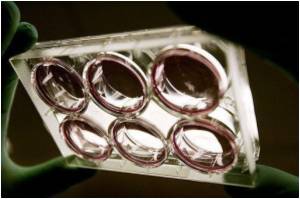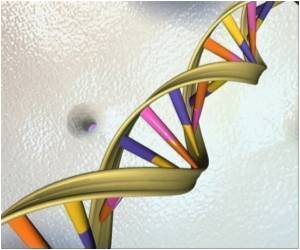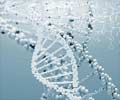
The research results are online Wednesday, Oct. 24, in the highly respected journal Nature. Dr. Mitalipov also will present the results of his research at the American Society for Reproductive Medicine Conference in San Diego Oct. 24'.
The OHSU gene therapy method was initially devised through research in nonhuman primates led by Shoukhrat Mitalipov, Ph.D., associate scientist in the Division of Reproductive & Developmental Sciences at ONPRC, Oregon Stem Cell Center and OHSU School of Medicine departments of Obstetrics and Gynecology and Molecular and Medical Genetics.
The procedure was specifically developed to prevent diseases related to gene defects in the cell mitochondria. Mitalipov's previous work was published in the August 2009 edition of Nature. In the current study, Mitalipov, in collaboration with Paula Amato, M.D., associate professor of obstetrics and gynecology in the OHSU Center for Women's Health, demonstrated efficacy of this therapy in human gametes and embryos.
"Cell mitochondria contain genetic material just like the cell nucleus and these genes are passed from mother to infant," explained Mitalipov. "When certain mutations in mitochondrial DNA are present, a child can be born with severe conditions, including diabetes, deafness, eye disorders, gastrointestinal disorders, heart disease, dementia and several other neurological diseases. Because mitochondrial-based genetic diseases are passed from one generation to the next, the risk of disease is often quite clear. The goal of this research is to develop a therapy to prevent transmission of these disease-causing gene mutations."
To conduct this research, Mitalipov and his colleagues obtained 106 human egg cells from study volunteers recruited through OHSU's Division of Fertility and Reproductive Endocrinology. The researchers then used a method developed in previous nonhuman primate studies, to transfer the nucleus from one cell to another. In effect, the researchers "swapped out" the cell cytoplasm, which contains the mitochondria. The egg cells were then fertilized to determine whether the transfer was a success and whether the cells developed normally. Upon inspection, it was demonstrated that it was possible to successfully replace mitochondrial DNA using this method.
Advertisement
The current Nature paper also expanded upon the previously reported nonhuman primate work by demonstrating that the method was possible using frozen egg cells. Mitochondria were replaced in a frozen/thawed monkey egg cell, resulting in the birth of a healthy baby monkey named Chrysta.
Advertisement
While this form of therapy has yet to be approved in the United States, the United Kingdom is seriously considering its use for treating human patients at risk for mitochondria-based disease. It's believed that this most recent breakthrough, combined with earlier animal studies, will help inform that decision-making process.
Because the research involved the use of human egg cells and there are restrictions to the use of federal funding for some work in human egg cells, private funding was obtained to accomplish the work.
In addition, researchers consulted with ethicists and other experts within OHSU's Institutional Review Board and the OHSU Stem Cell Research Oversight Committee (OSCRO) prior to embarking on this research. The OSCRO reviews research involving human embryonic stem cells at OHSU to ensure that all federal and state regulations governing the conduct of stem cell research are met and that all human embryonic stem cell research is conducted in accordance with the general principles expressed in the National Academies' Guidelines for Human Embryonic Stem Cell Research. The OHSU IRB reviews biomedical and behavioral research that involves humans in order to protect the rights and welfare of the research subjects.
Source-Eurekalert












